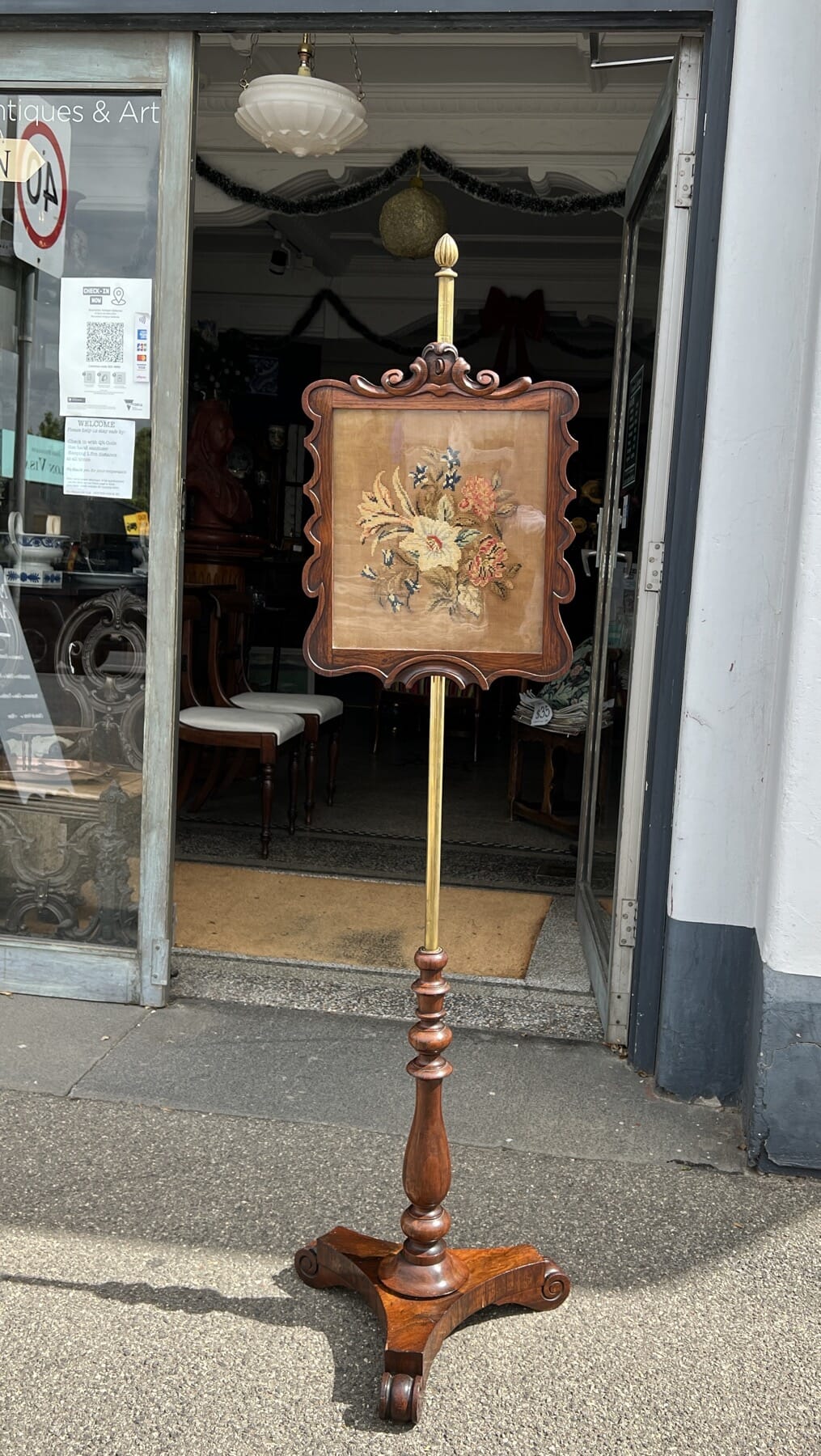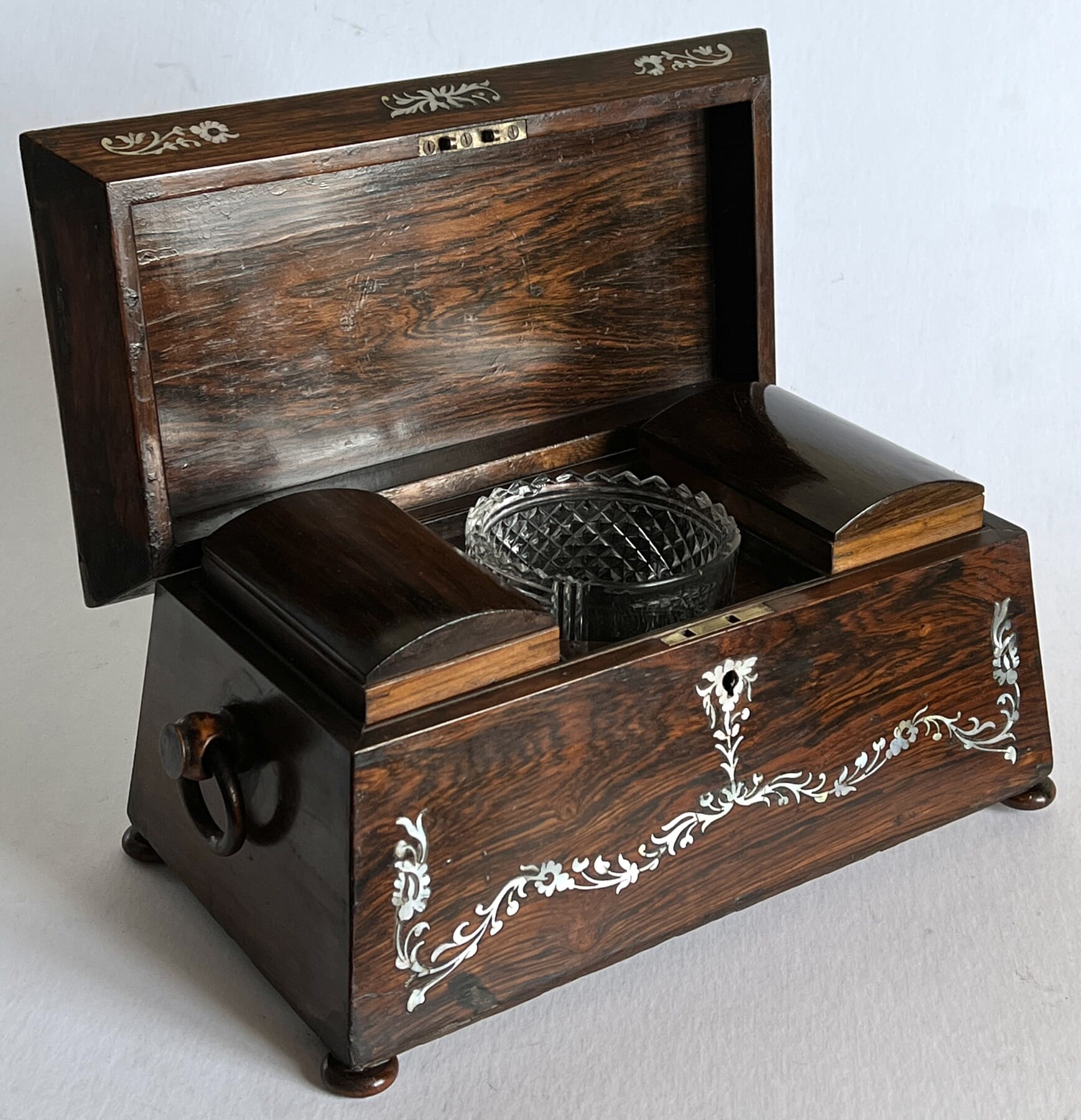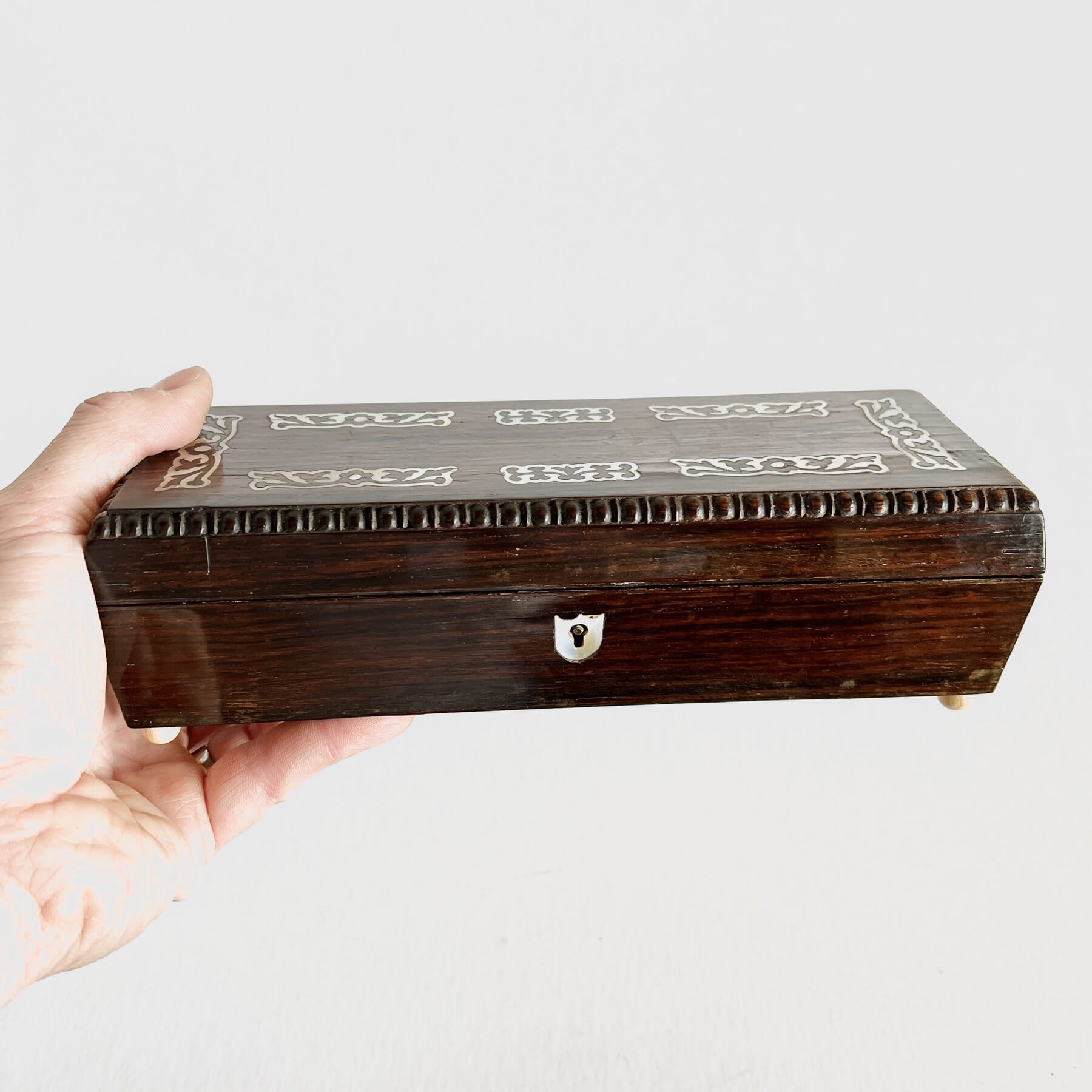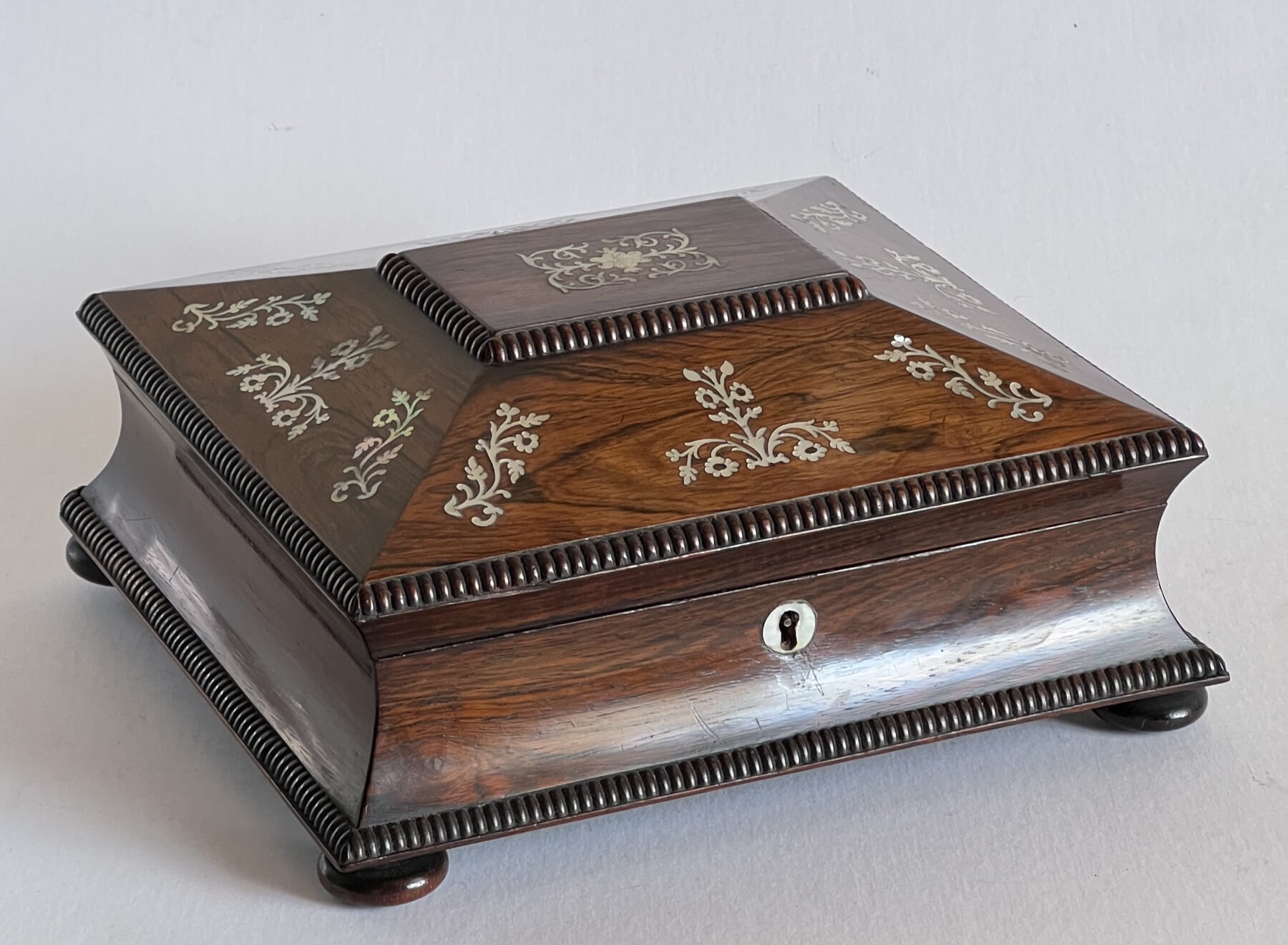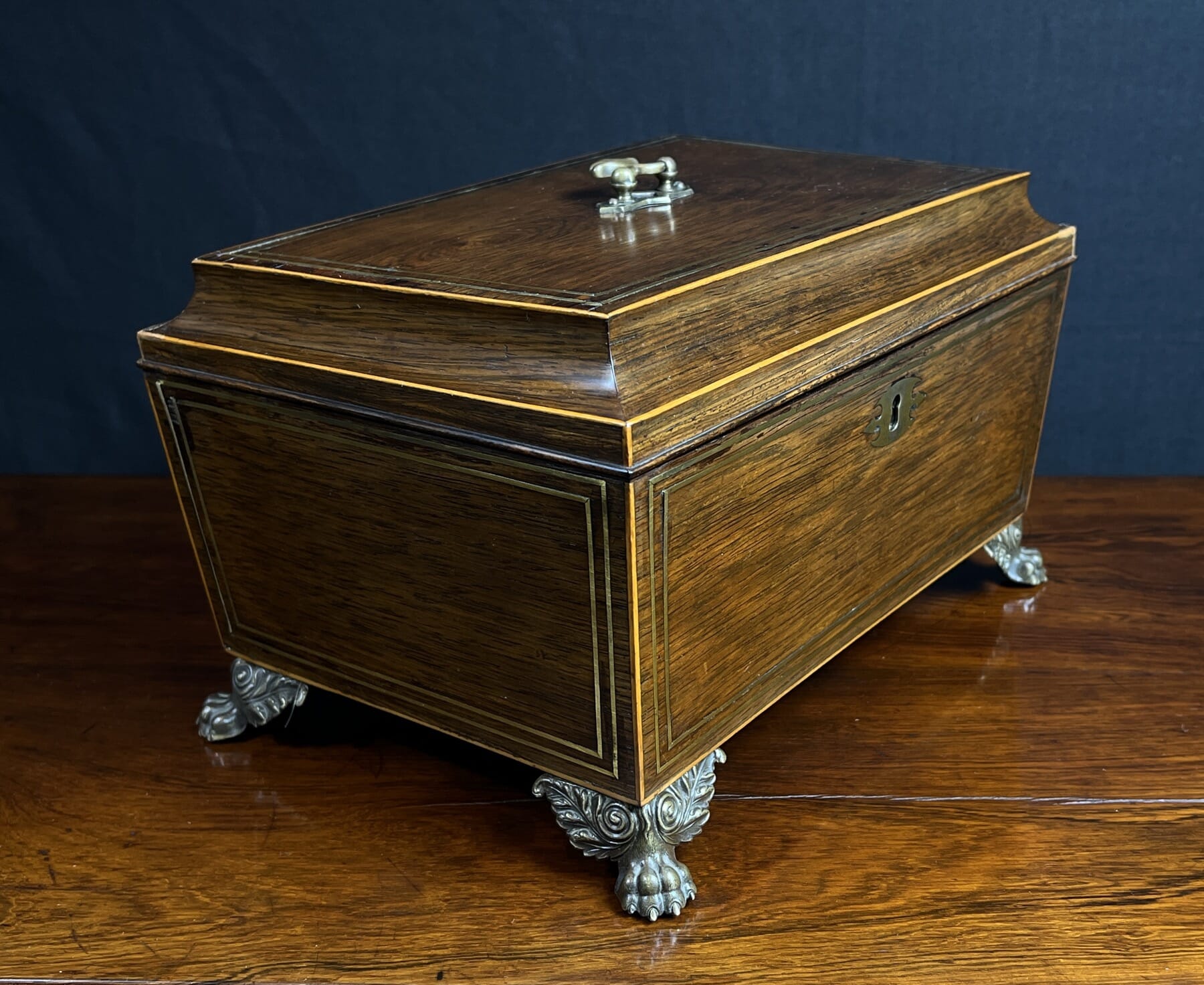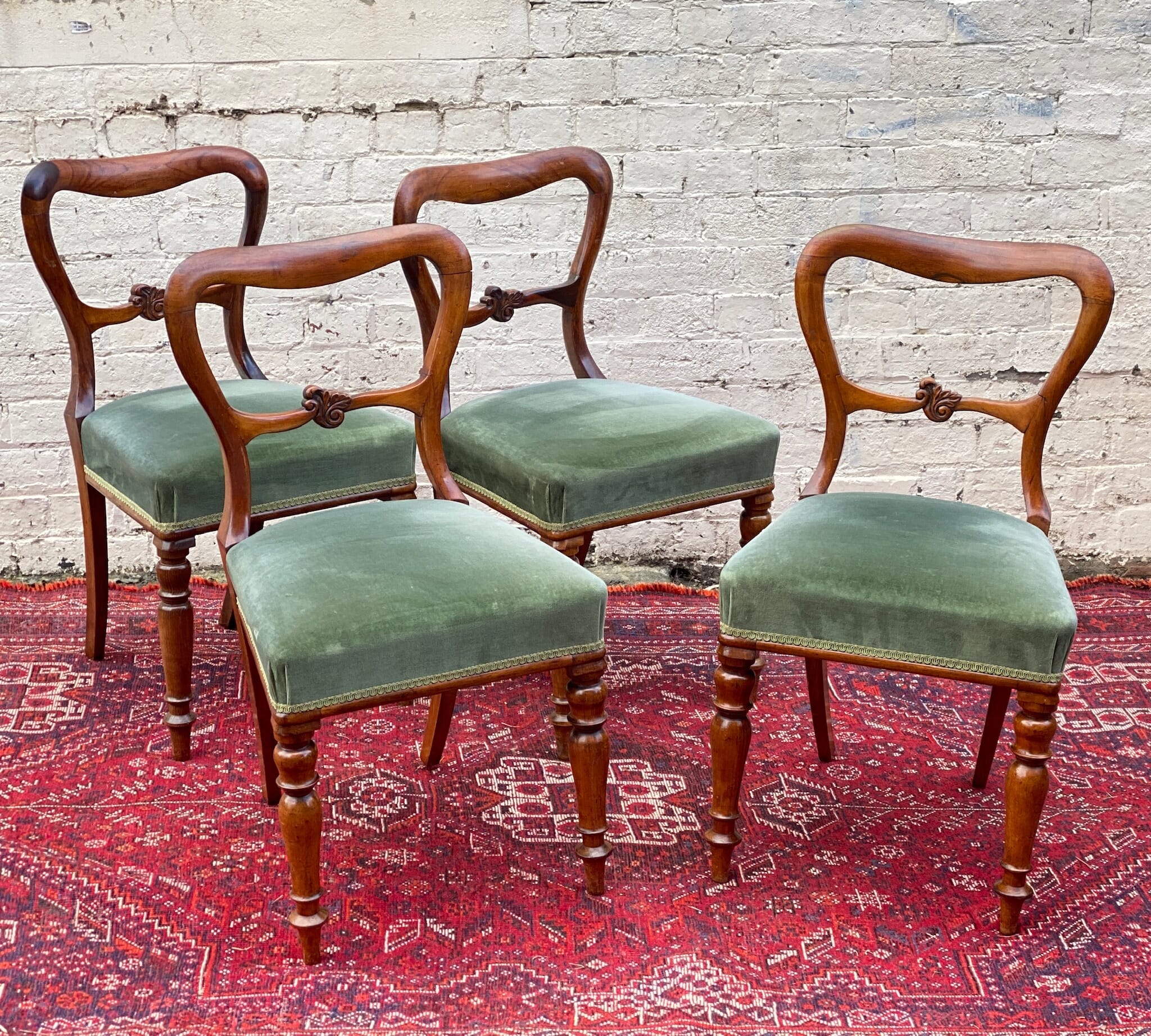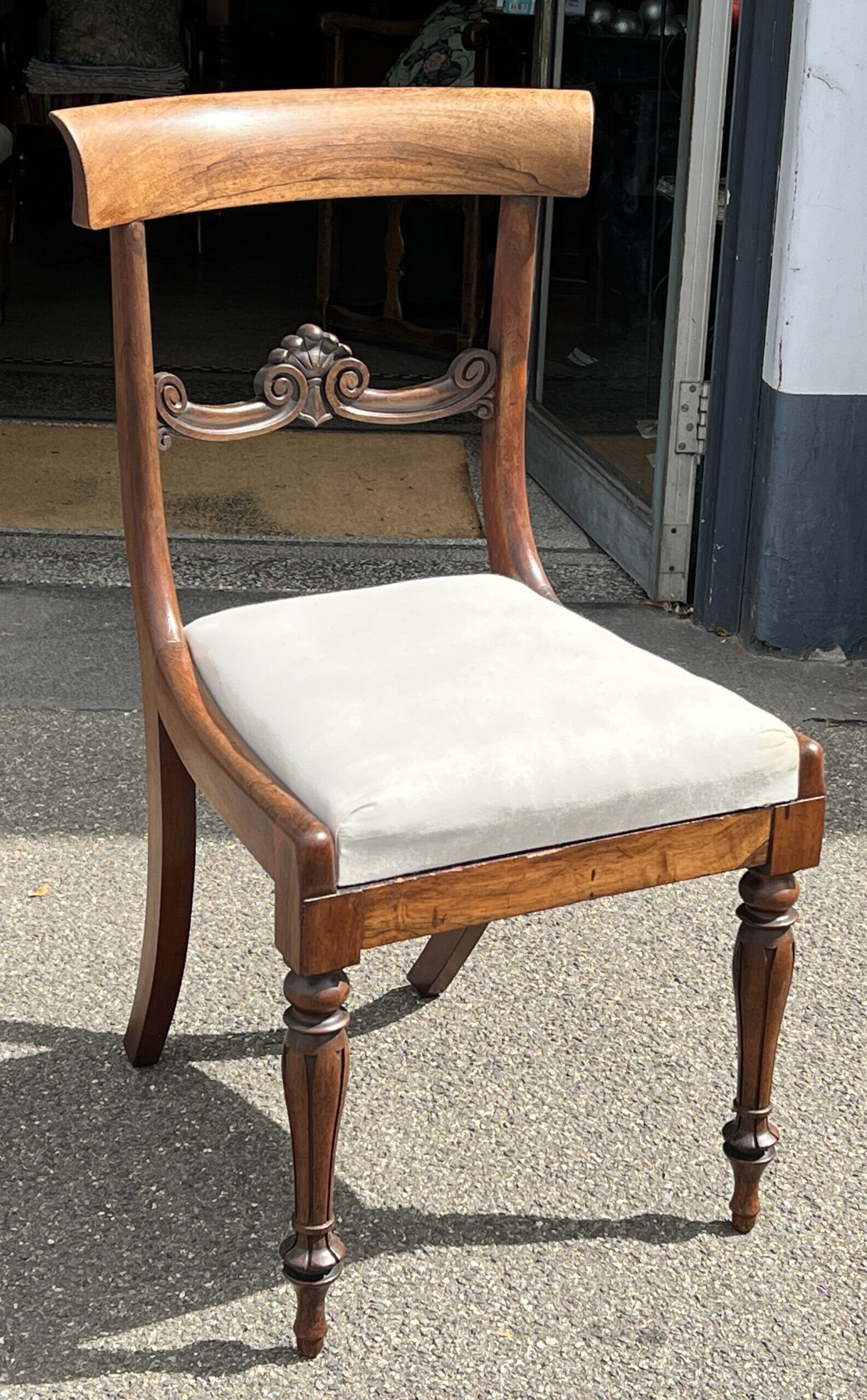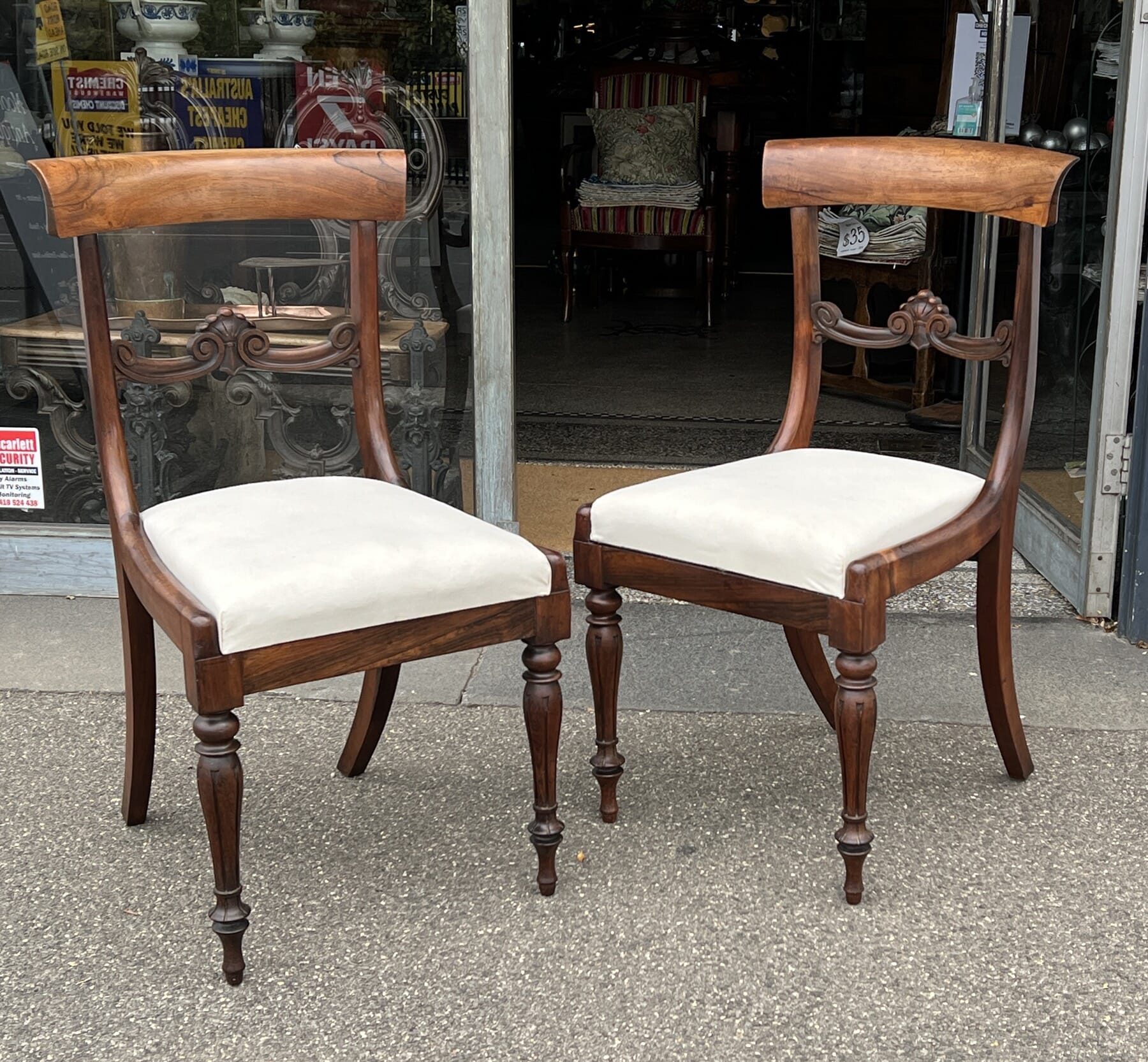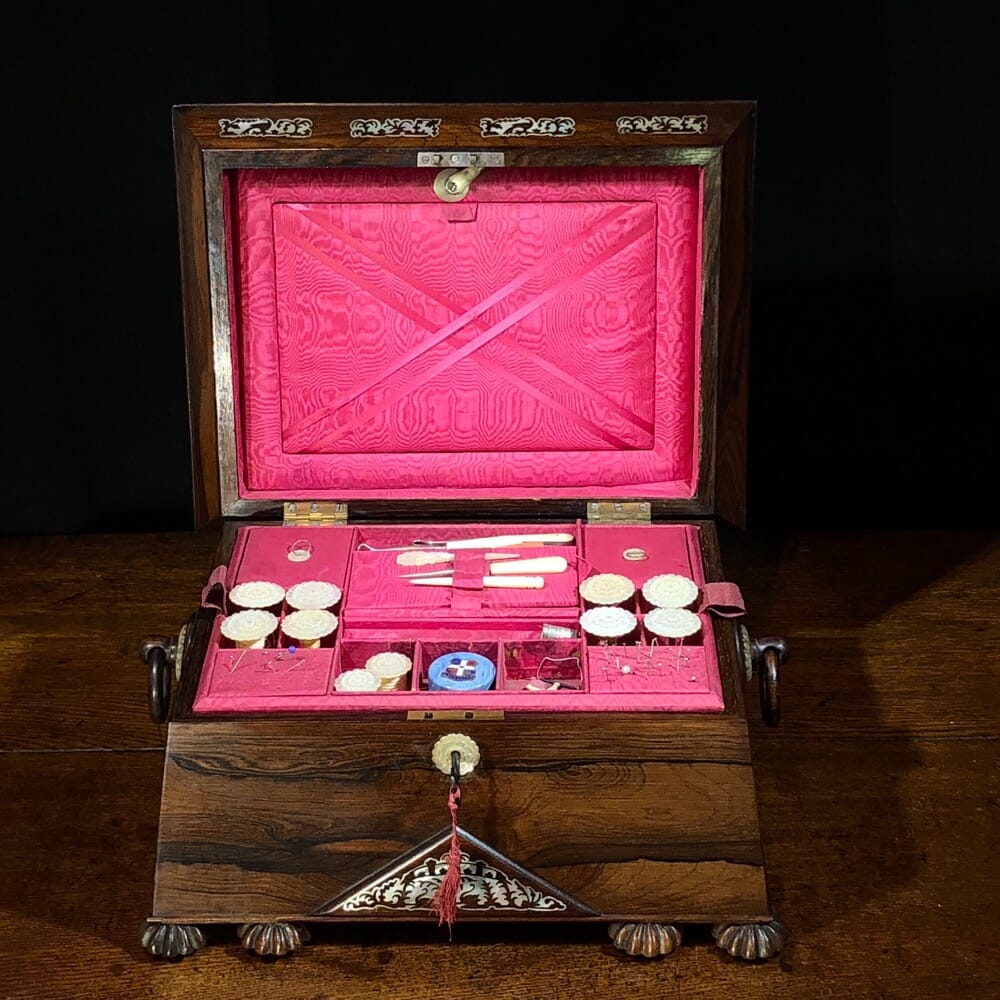Rosewood is a stunning exotic timber with a fascinating story.

click the link above to see the item
The name ‘Rosewood’ brought up all kinds of imaginative scenes in my young mind – imagine, a rose bush so large you could make furniture from its trunk! What a sight!
Reality is much simpler; Rosewood is a tropical hardwood timber, named so as the sweet smell when cut was said to resemble the scent of roses. The original timber used by the English cabinetmakers of the 18th & 19th century came from Brazil – Brazilian Rosewood, Dalbergia Nigra. This tree grows to a reasonable size, and the cabinet makers were able to use decent logs for solid furniture construction, as well as achieve wide segments of veneer by slicing the widest logs. The resulting timber is a superb dark, dense grain with lighter patches – known as ‘figuring’ – giving a great contrasting effect.
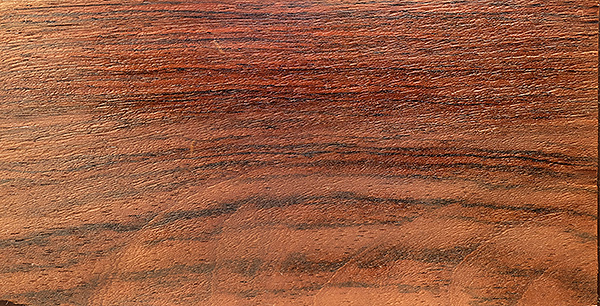
The D. Nigra trees were once easily accessible, but as the European demand for the timber grew, the source-trees were logged out. Another source was found for another similar ‘Rosewood’, in the same family but from south-east India: Dalbergia Latifolia. This has a more uniform & tighter appearance to the figuring in the grain.

Many other members of the family Dalbergia were found around the globe, with the list of woods known as ‘Rosewood’ lengthening to 20 species, distributed from the Amazon, through central America & into Mexico, right across South-East Asia, India, and Madagascar. In Africa, several different species with similar appearance were also found and exploited. In China, the local species Dalbergia odorifera was always a prized wood for furniture, known as ‘Chinese Rosewood’ or Huanghuali, sometimes shortened to Huali.
Huge numbers were used for furniture by the Europeans, who prized it for the dark luxury it created. The Regency period pieces, with inlaid pearlshell cut-outs, transforms it into the equivalent of a semi-precious stone.
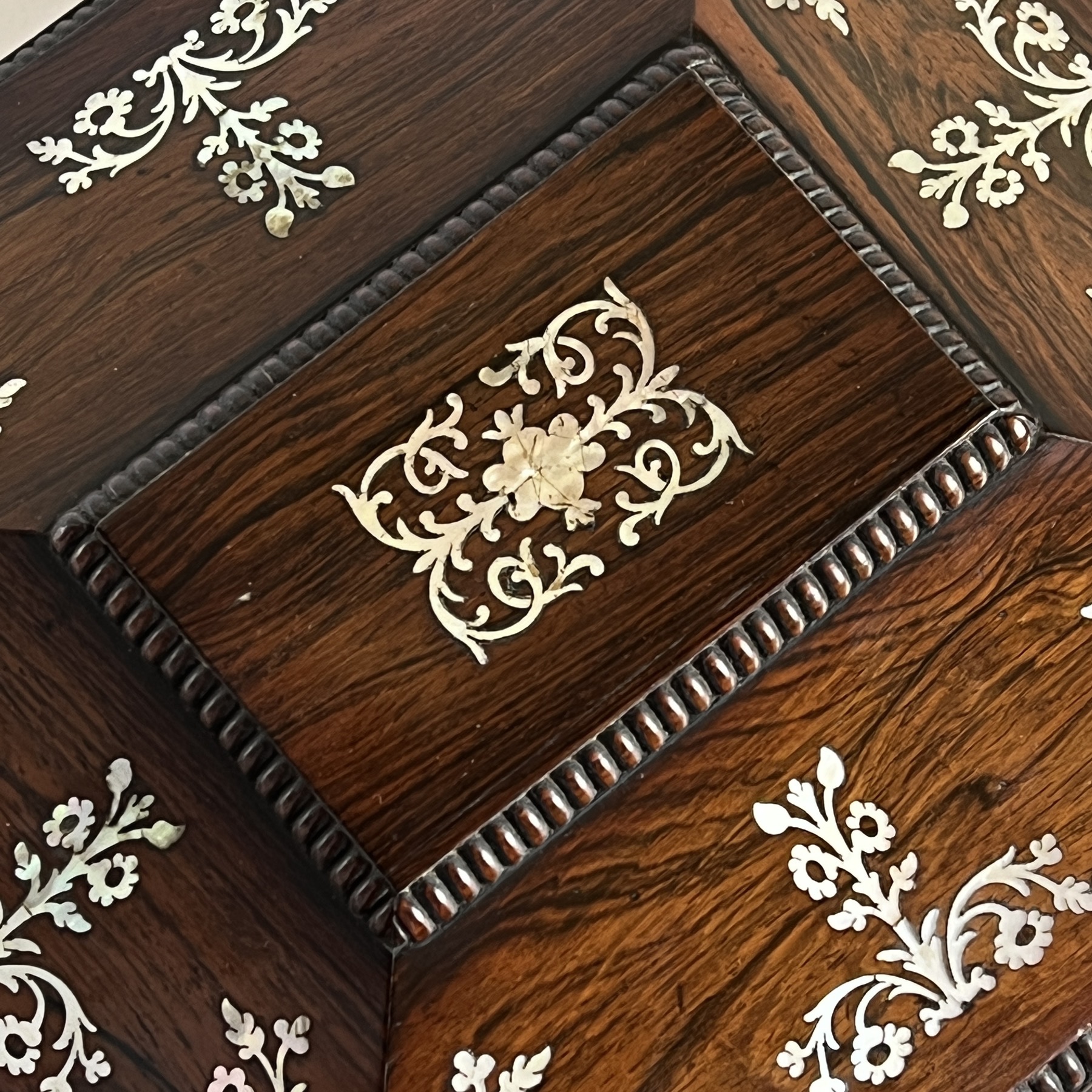
With Europe’s demand, supply became scarcer, and taste moved on: by the later 19th century, Rosewood becomes a rarity in furniture making. However, with the globalisation of the timber trade in the latter 20th century, particularly the insatiable appetite for exotic woods for plywood veneer, substitutes were found – and they too were logged massively. Right across South America, and South-East Asia, and India, substitute dark-grained woods were extensively harvested. With the rise of China in the 21st century, ‘Rosewood’ was in huge of demand, and so UNESCO was forced to step in due to the over-exploitation of the various species. In the 2010’s, over 300 different species labelled ‘Rosewood’ were protected by legislation, slowing down the surge, but also creating a black market for illegal logging. It is hopeful that carefully managed plantation-grown trees will mean a sustainable future for this lovely timber is possible.
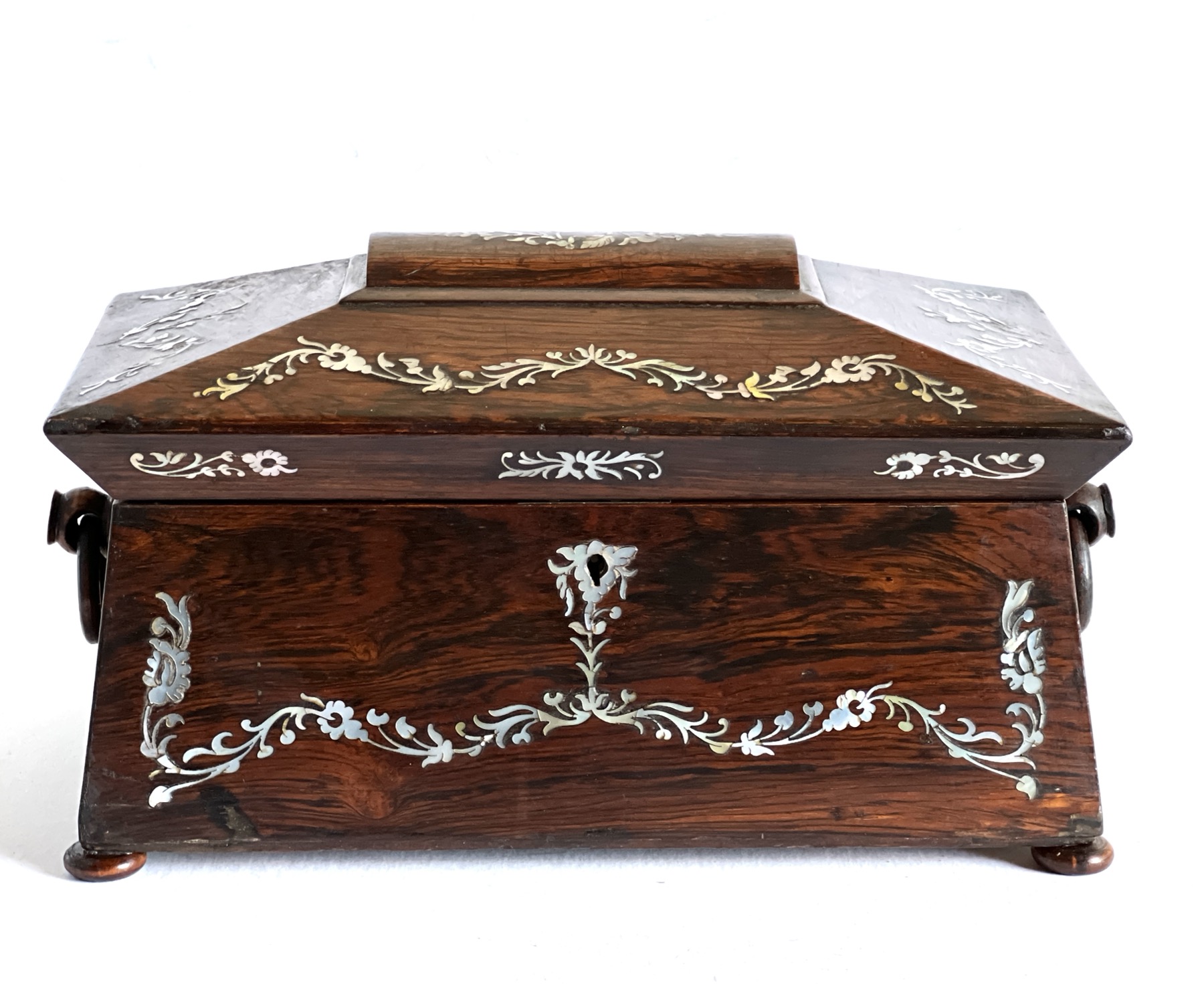
How pleasing it is to look at these superb Antique pieces – from a different age, when there was a plentiful supply of this beautiful timber – and craftsmen knew how to skilfully turn it into quality items that have survived into the present.
-
 William IV rosewood pole screen with period embroidery, c. 1835Original price was: $950.00 AUD.$500.00 AUDCurrent price is: $500.00 AUD.
William IV rosewood pole screen with period embroidery, c. 1835Original price was: $950.00 AUD.$500.00 AUDCurrent price is: $500.00 AUD. -
 William IV Rosewood tea caddy with pearl inlay, original canisters, cut glass mixing bowl, c. 1835$2,850.00 AUD
William IV Rosewood tea caddy with pearl inlay, original canisters, cut glass mixing bowl, c. 1835$2,850.00 AUD -
 William IV Rosewood glove box, mother-of-pearl inlay, c. 1835$495.00 AUD
William IV Rosewood glove box, mother-of-pearl inlay, c. 1835$495.00 AUD -
 William IV Rosewood box, mother-of-pearl inlay, c. 1835Sold
William IV Rosewood box, mother-of-pearl inlay, c. 1835Sold -
 Rosewood jewellery box, brass stringing, green velvet interior, c. 1835$950.00 AUD
Rosewood jewellery box, brass stringing, green velvet interior, c. 1835$950.00 AUD -
 Four Victorian Rosewood balloon-back chairs, carved rail, c. 1860Sold
Four Victorian Rosewood balloon-back chairs, carved rail, c. 1860Sold -
 Regency Rosewood chair, nicely carved details, c. 1825$345.00 AUD
Regency Rosewood chair, nicely carved details, c. 1825$345.00 AUD -
 Pair of Regency Rosewood chairs, nicely carved details, c. 1825$645.00 AUD
Pair of Regency Rosewood chairs, nicely carved details, c. 1825$645.00 AUD -
 William IV Rosewood sewing box, musical with contents, c.1835Sold
William IV Rosewood sewing box, musical with contents, c.1835Sold

